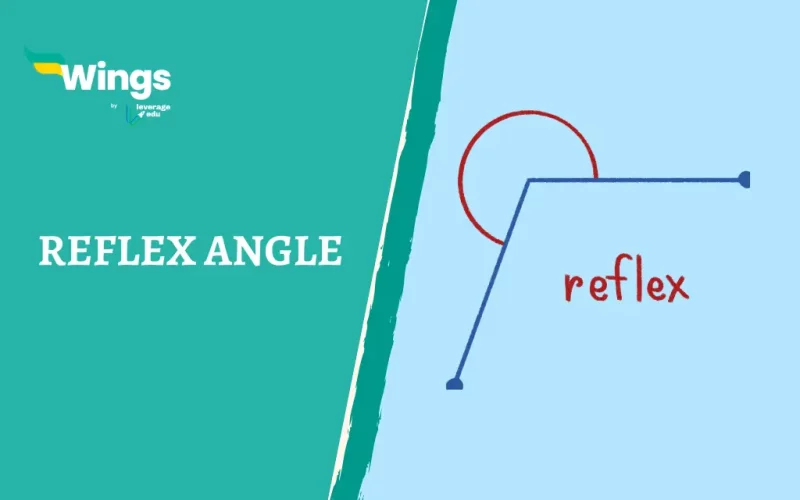In the world of geometry, Angles are basic components that govern the relationships and configurations of shapes. Among these, Reflex Angle offers an understanding of angular concepts. We observe Reflex Angles in pizzas and the arms of a clock when it is 7. In this blog, you will get to learn about what is a Reflex Angle, its properties, formulas, and examples.
Also Read: Order of Operations and PEMDAS Rule
What is a Reflex Angle?
A Reflex Angle is an angle that measures greater than 180 degrees which is a straight angle, but less than 360 degrees, a full circle. Imagine a straight line, and rather than stopping at 180 degrees, one of its arms keeps rotating beyond it, but not all the way around to complete a full circle. Therefore, the angle created between that rotating arm and the other fixed arm is a Reflex angle.

Also Read: Multiplication and Division Word Problems
Properties of a Reflex Angle
Reflex Angles have many important properties that distinguish them from other types of angles. Moreover, these properties include:
- These angles measure greater than 180° but less than 360°.
- They are formed by extending one side of an acute angle.
- Reflex angles are larger than straight angles (which measure 180°) and smaller than full angles (which measure 360°).
- The sum of a Reflex angle and its corresponding angle is always 360°.
- Reflex angles can be found in various geometric shapes and real-world scenarios, such as clock hands and building structures.
Also Read: Word Problems on Arithmetic Operations
Formulas of Reflex Angle with Examples
Additionally, to find the Reflex angle of a given angle, you can use the following formulas:
- Reflex angle = 360° – given angle.
- Reflex angle = 180° + acute angle.
- Reflex angle = 180° + obtuse angle.
- Reflex angle = 180° + right angle.
For example, if the given angle is 110°, the Reflex angle would be:
- Reflex angle = 360° – 110° = 250°
Also Read: Profit and Loss Formula Questions
Examples of a Reflex Angle
Reflex angles can be found in different real-life scenarios. Here are a few examples:
- Clock: The angle between the hour and minute hands of a clock at 7 o’clock forms a Reflex angle.

- Pizza: The remaining pizza part after cutting a slice forms a Reflex angle.

Also Read: BODMAS Questions
What is the Reflex Angle of 120°?
Furthermore, given an angle of 120° to find its reflex angle, we apply the formula:
Reflex Angle = 360° – 120° = 240°
Therefore, the reflex angle of 120° is 240°.
What is a Reflex Angle of 36°?
For an angle measuring 23° its Reflex angle can be determined as follows:
Reflex Angle = 360° – 36° = 324°
Thus, the reflex angle of 36° equals 324°.
Related Blogs
I hope this helps! Did you like learning about Reflex Angle? Keep reading our blogs to learn more about the Basic Concepts of Maths!
 One app for all your study abroad needs
One app for all your study abroad needs













